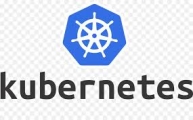The Origins of Kubernetes
The story of Kubernetes begins with Google’s experience in managing containers at scale. In the early 2000s, Google was already running vast numbers of containers using its internal systems like Borg and Omega, which were designed to handle the complexities of containerized workloads across thousands of servers. These early systems laid the foundation for what would later become Kubernetes. Borg, in particular, managed applications on a large scale within Google’s infrastructure, but it was a proprietary tool unavailable to the wider public. Recognizing the growing interest in containers and the need for an open-source solution, Google engineers wanted to create a more accessible platform that mirrored Borg's capabilities but could be used by developers and organizations worldwide. This need for efficient container management tools in open-source software ultimately led to the birth of Kubernetes.Release as an Open-Source Project
In 2014, Google released Kubernetes as an open-source project, aiming to share their expertise in managing containers with the broader tech community. The goal was to simplify the deployment and management of containerized applications while providing a unified platform to orchestrate containers across clusters of machines. Unlike previous solutions, Kubernetes provided flexibility and automation, which made it easier to manage containers at scale. The name Kubernetes itself originates from the Greek word for "helmsman" or "pilot," reflecting its role in steering the deployment and management of containers. The platform became a key solution to managing containerized applications efficiently, with automation and scalability at its core.Adoption and Growth of Kubernetes
Following its release, Kubernetes quickly gained traction among developers and organizations, becoming the de facto standard for container orchestration. The rise of container technologies like Docker during the same period helped accelerate Kubernetes' adoption. Many businesses were adopting Docker to containerize their applications but needed a robust tool to manage, scale, and maintain these containers. Kubernetes filled this gap perfectly. By automating key processes such as load balancing, scaling, and health monitoring, Kubernetes provided a powerful platform for building cloud-native applications. It became especially valuable for companies that wanted to move away from traditional monolithic architectures and embrace microservices, which offer greater flexibility and scalability.Rise of Cloud-Native Architecture
As organizations moved towards microservices and cloud-native architectures, Kubernetes emerged as the cornerstone of the cloud-native ecosystem. It allowed developers to build and manage distributed systems more effectively. By separating applications into smaller, independent services (microservices), Kubernetes enabled teams to deploy and manage applications more rapidly and flexibly. The platform became so popular that major cloud providers, including Google Cloud Platform (GCP), Amazon Web Services (AWS), and Microsoft Azure, began offering managed Kubernetes services. These services, like Google Kubernetes Engine (GKE), Amazon Elastic Kubernetes Service (EKS), and Azure Kubernetes Service (AKS), made it easier for businesses to adopt Kubernetes without having to manage the underlying infrastructure.Why Kubernetes Became the Standard
Kubernetes has become the industry standard for container orchestration due to its extensibility, scalability, and ability to integrate with third-party tools. One of the key advantages of Kubernetes is its plugin-based architecture, which allows developers to easily integrate additional features, tools, and services into their Kubernetes clusters. This flexibility ensures that Kubernetes can adapt to any workload or environment, whether on-premises, in the cloud, or in hybrid setups.Flexibility, Scalability, and Extensibility
Kubernetes introduced the concept of desired state management, where users define the desired state of their application, and Kubernetes automatically works to maintain that state. For example, if a server crashes or goes offline, Kubernetes will automatically spin up new containers to maintain the desired number of running instances. This automation is especially important in environments where workloads change rapidly, such as high-traffic websites, where the number of requests may fluctuate significantly throughout the day. Kubernetes also offers native support for load balancing and auto-scaling. This means that it can automatically distribute traffic across multiple containers and scale applications up or down based on demand. These features are essential for businesses looking to optimize their resources and reduce costs, as Kubernetes helps ensure that applications only use the computing resources they need at any given time.Kubernetes in the Enterprise
As businesses increasingly adopt multi-cloud and hybrid cloud strategies, Kubernetes has become the go-to solution for managing complex infrastructures. Kubernetes abstracts away the underlying infrastructure, making it easier to deploy applications consistently across different cloud providers or on-premises data centers. In addition, Kubernetes is highly valued for its auto-scaling capabilities in enterprise environments. This is particularly useful when applications experience varying levels of traffic. Kubernetes ensures that applications scale automatically based on demand, enabling organizations to maintain high availability without over-provisioning resources.Kubernetes and Security
Kubernetes also excels in security with features like Role-Based Access Control (RBAC), network policies, and secrets management, ensuring that containers and workloads remain secure even in complex, distributed environments. With these tools, Kubernetes helps enterprises securely manage their containerized applications, enforcing policies that prevent unauthorized access and ensuring that sensitive information like passwords and tokens are stored securely. Enterprises also benefit from the vast ecosystem surrounding Kubernetes, which includes a variety of tools and platforms designed to enhance security, monitoring, and management capabilities. As the container ecosystem grows, Kubernetes continues to evolve, providing solutions that address the specific needs of enterprises.Key Milestones in Kubernetes' Journey
Kubernetes’ journey is marked by several important milestones:- 2014: Kubernetes is released as an open-source project by Google.
- 2015: Kubernetes is donated to the Cloud Native Computing Foundation (CNCF), helping it grow within the open-source community.
- 2017: Kubernetes becomes the de facto container orchestration platform, with major cloud providers offering managed services.
- 2018: Kubernetes reaches 1.0 status, signaling its maturity and readiness for enterprise use.
- 2019: Kubernetes has become the most widely used tool for managing containers, with over 80% of cloud-native businesses adopting it.
- 2021: Kubernetes continues to dominate the cloud-native landscape, powering some of the world’s largest and most complex applications.

